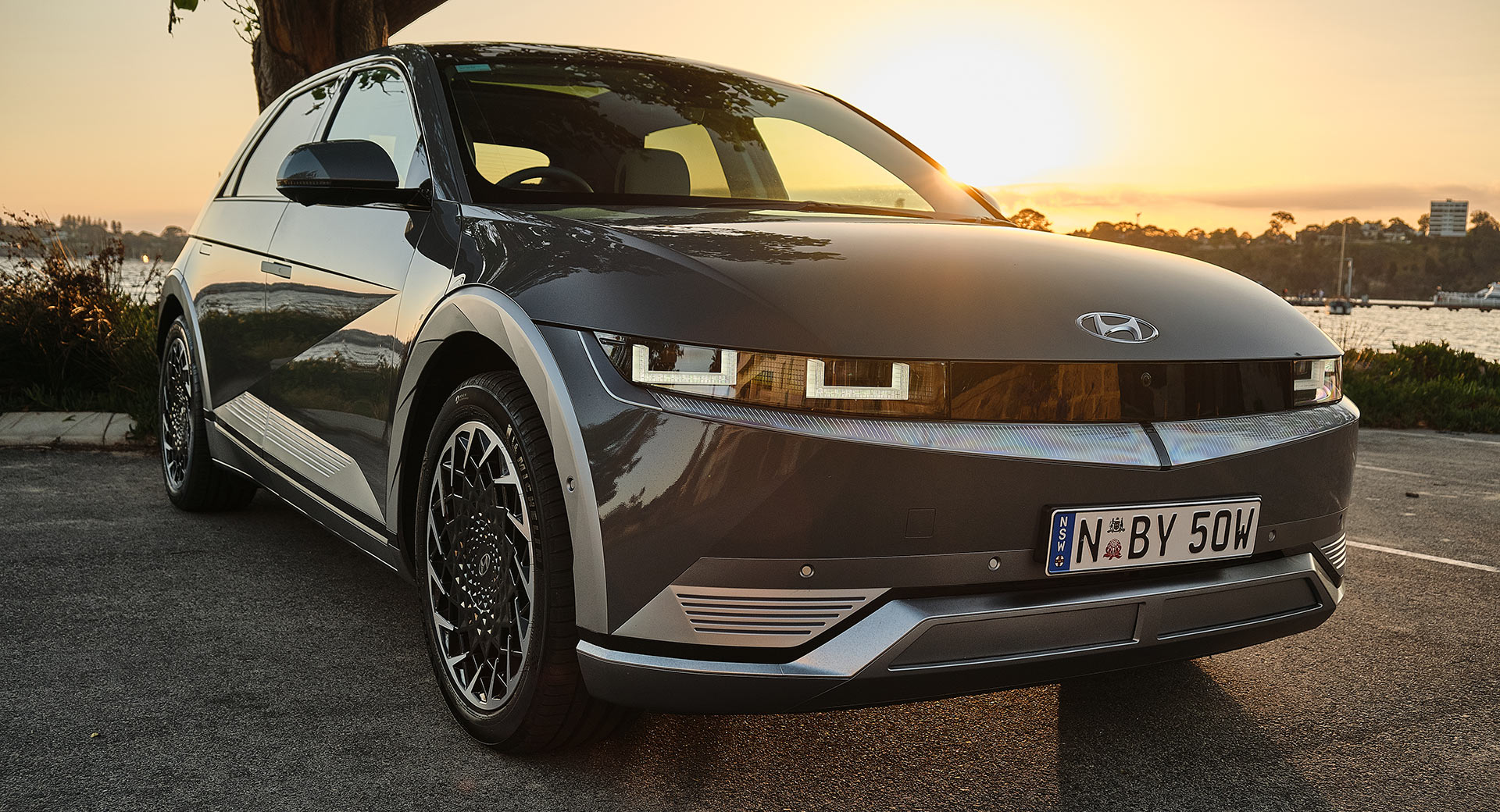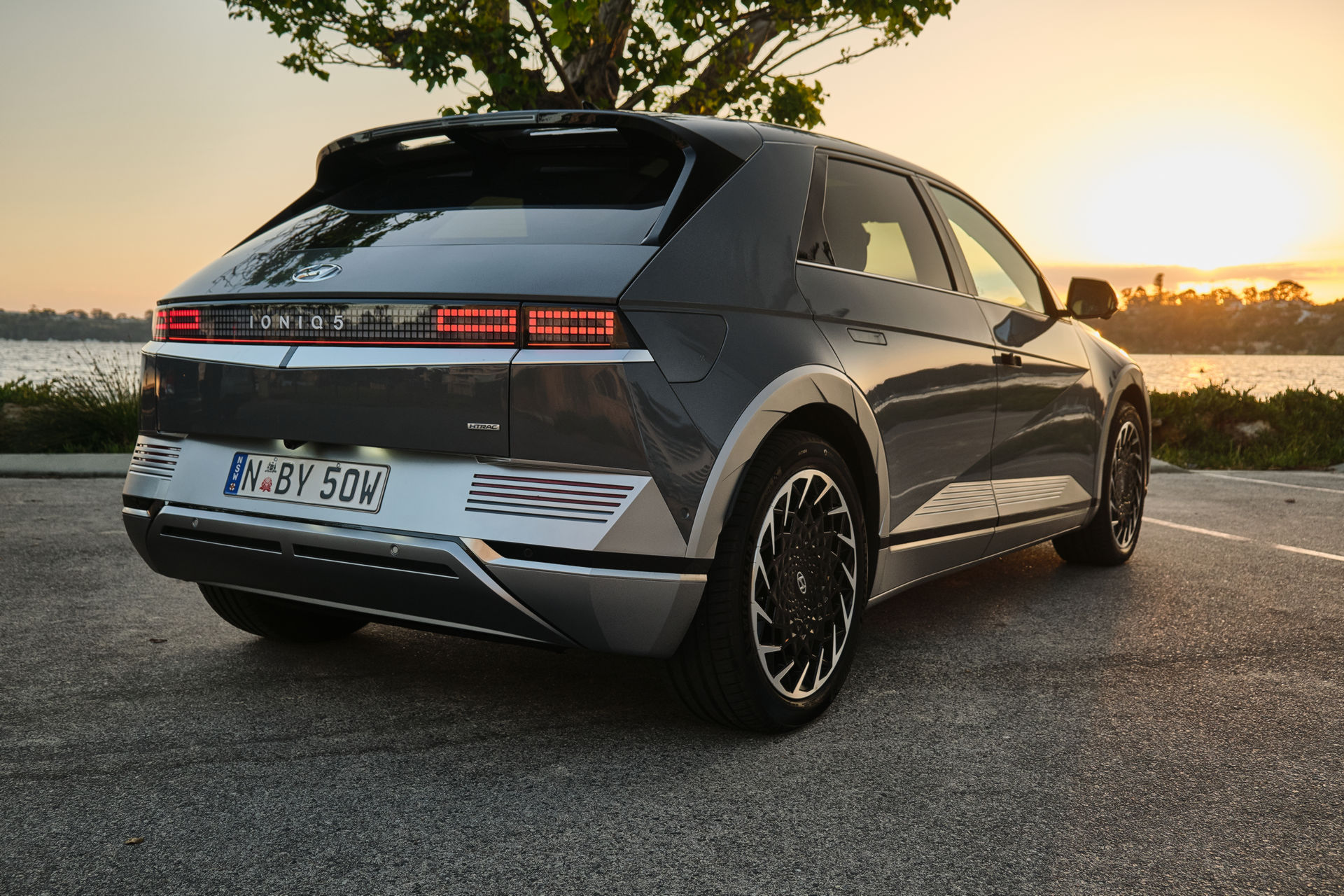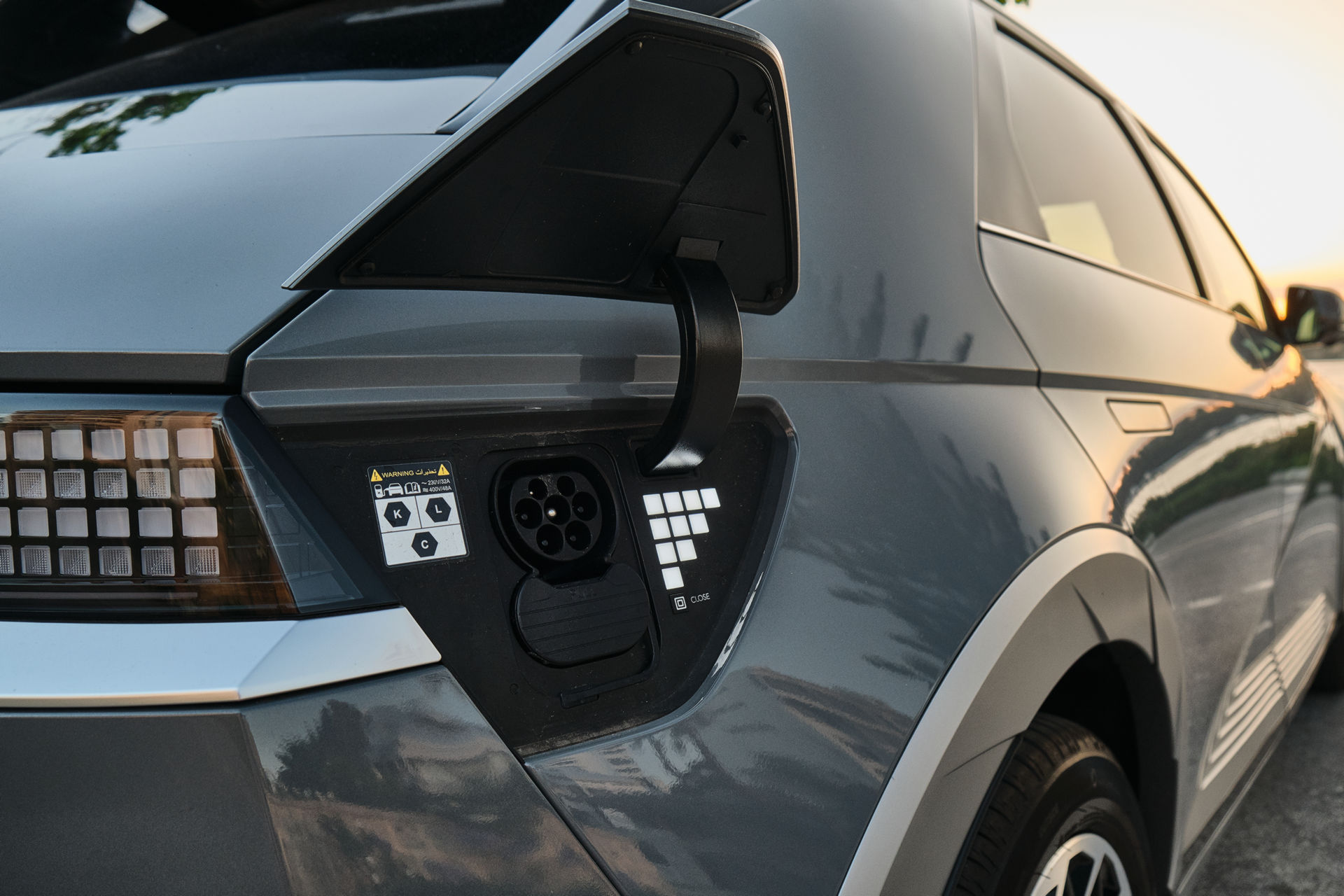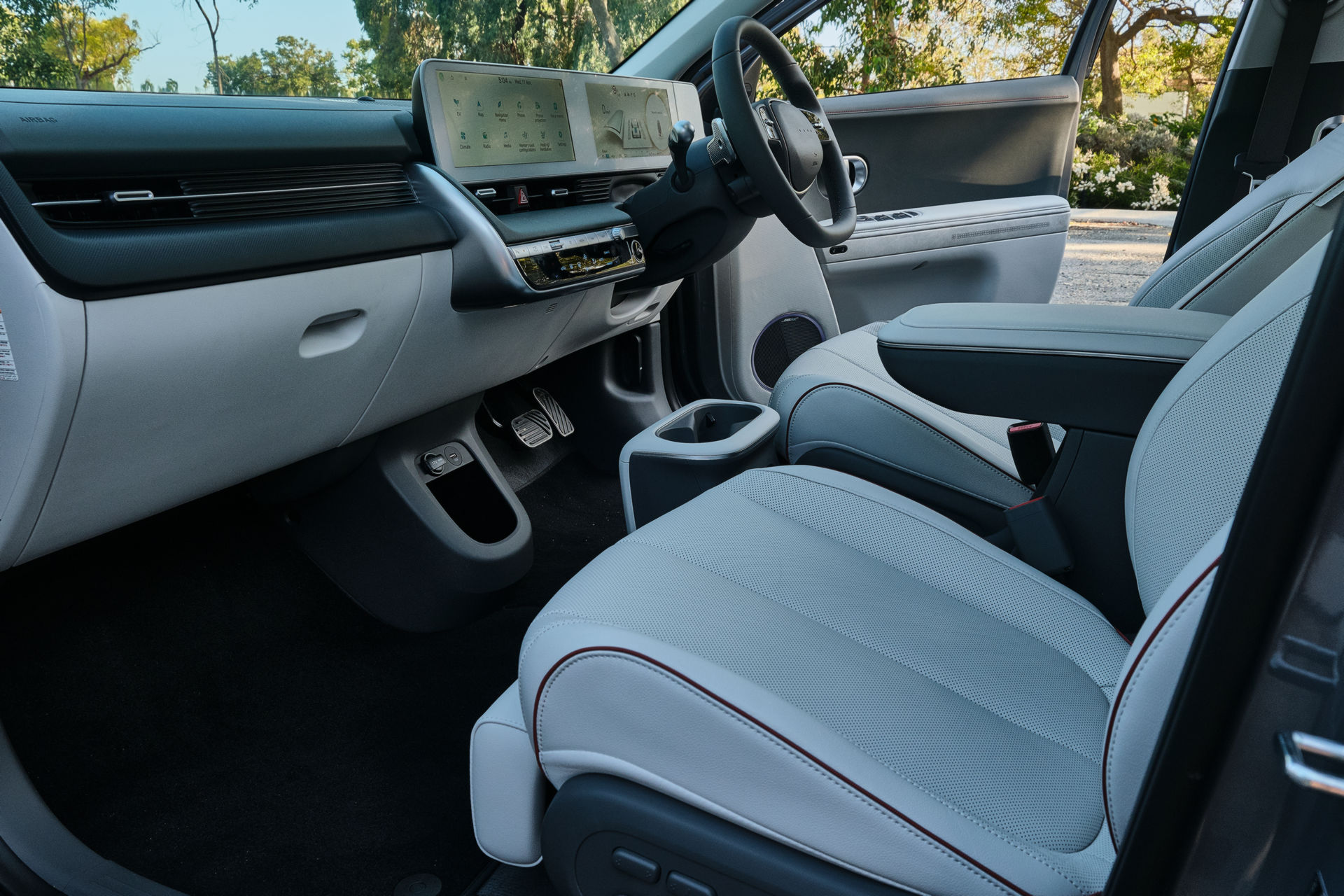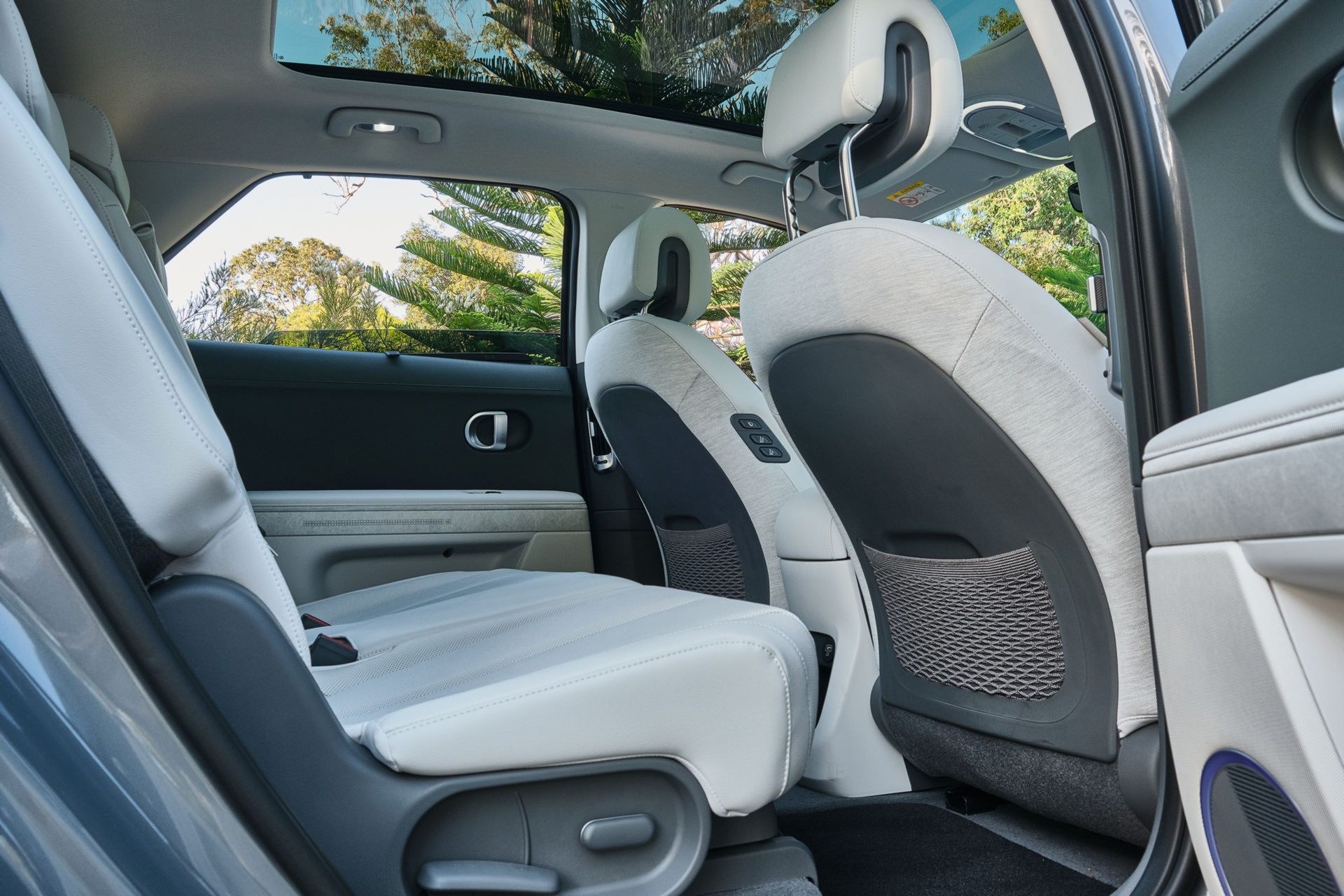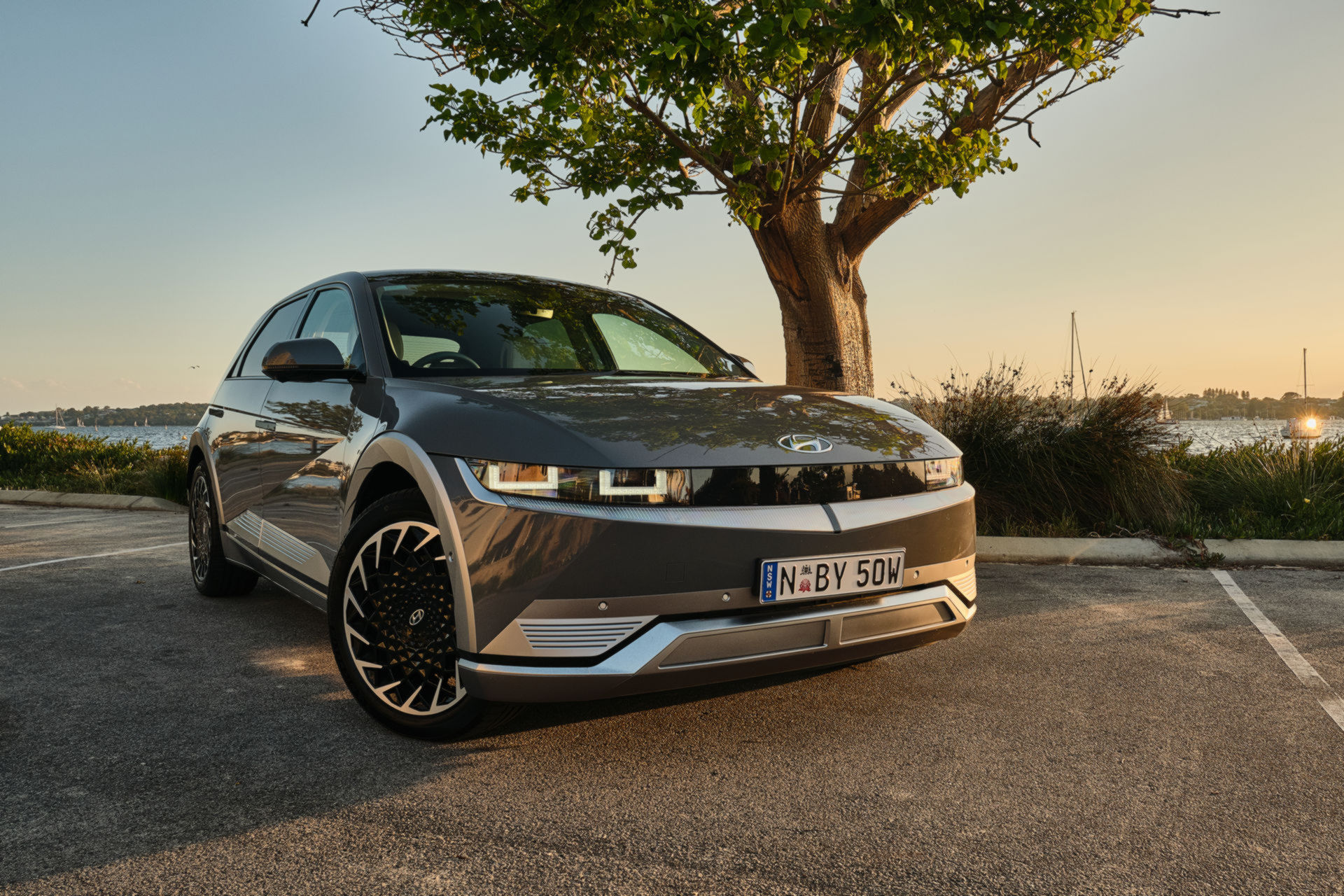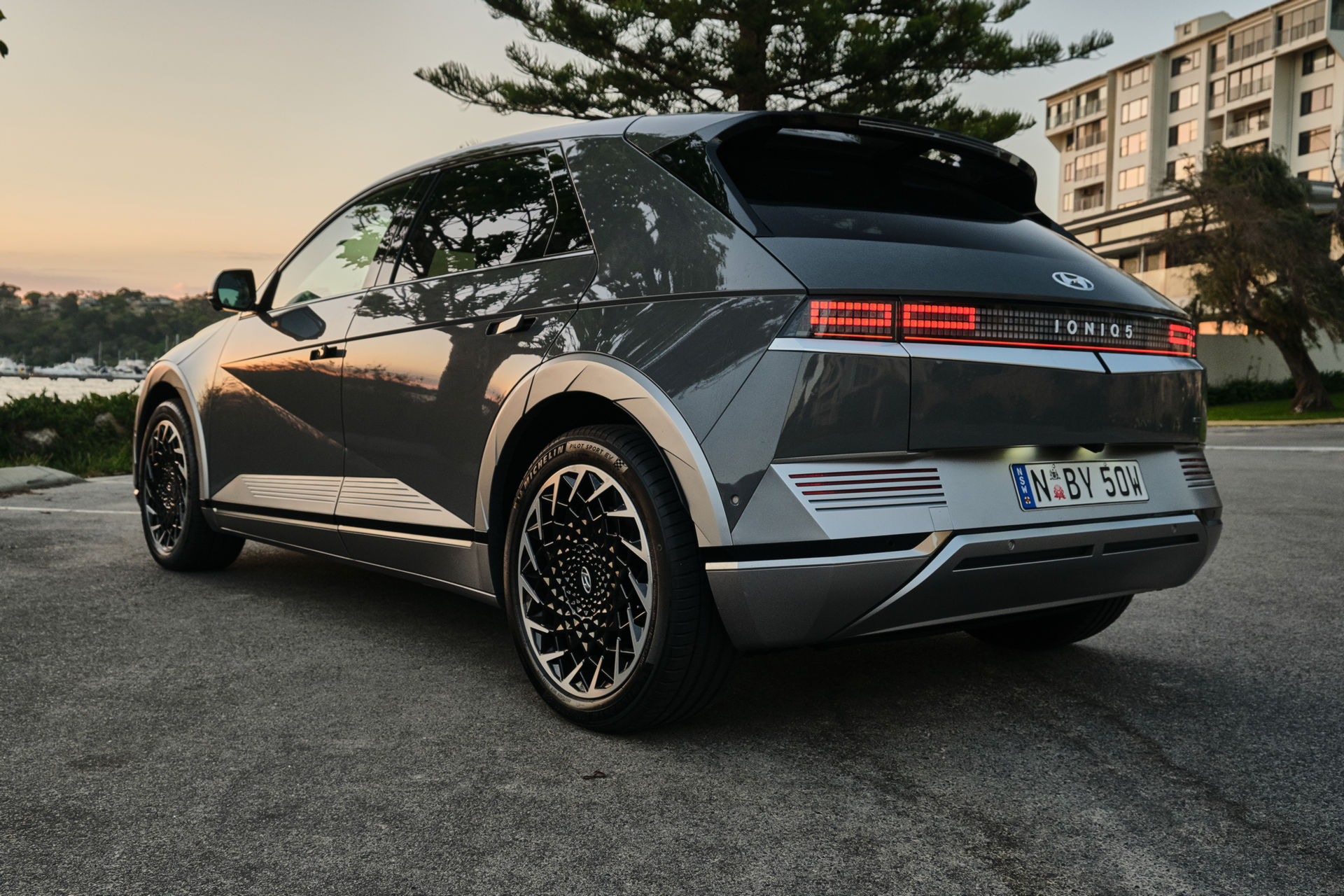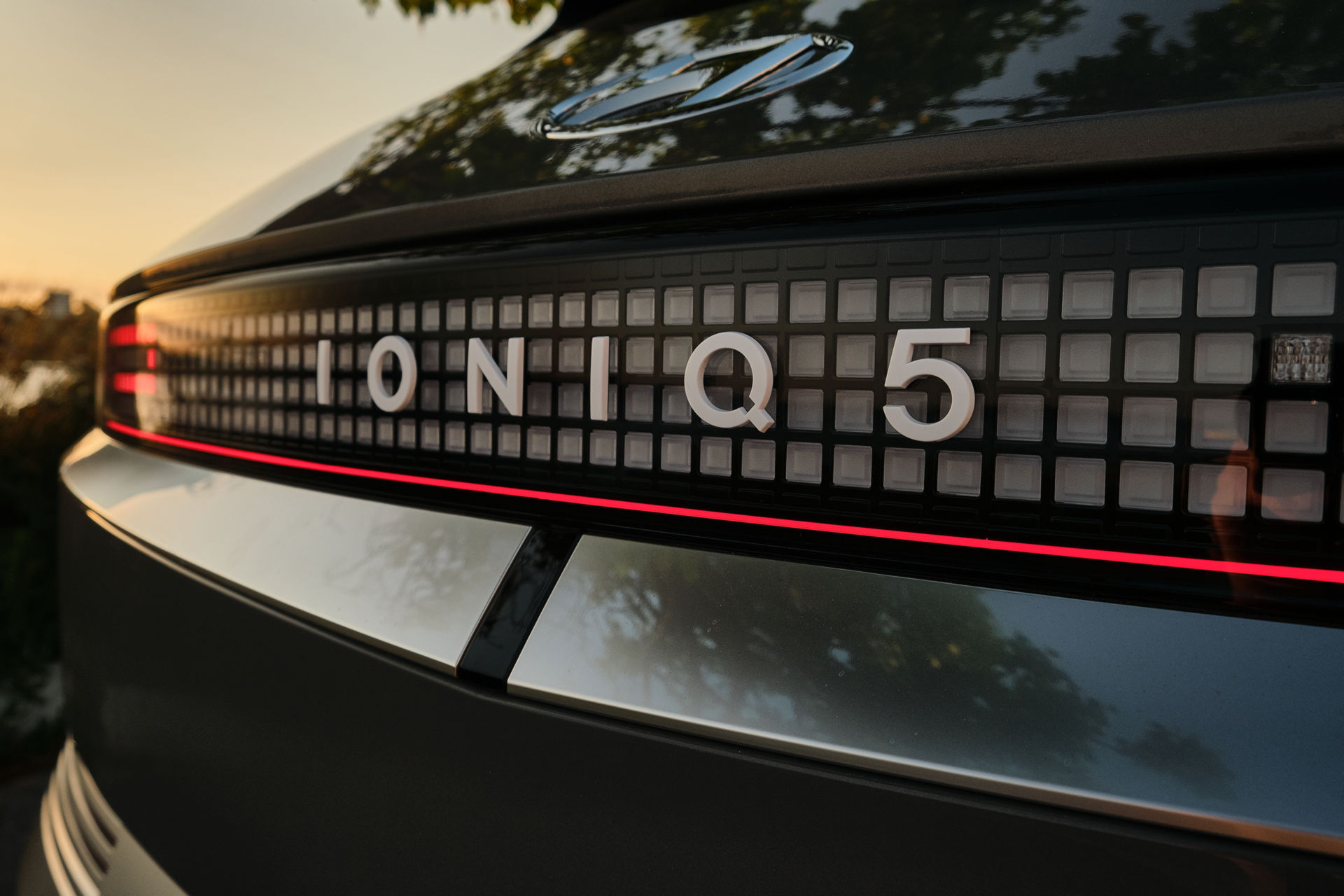The 2022 Hyundai Ioniq 5 proves that legacy automakers should now be taken seriously in the electric vehicle space.
Regardless of how you feel about Tesla and its eccentric leader, Elon Musk, it’s impossible to deny that the Californian automaker has long led, and continues to lead, the electric vehicle race. In fact, if it wasn’t for Tesla, there probably wouldn’t an electrification race among the world’s largest automakers like there currently is.
Hyundai’s all-new Ioniq 5 isn’t the first ‘affordable’ EV launched by a mainstream brand and it’s not even Hyundai’s first EV. However, it is one of the most exciting and is the best EV on sale at this price point.
A Hyundai unlike any other
Underpinning the Ioniq 5 is the same Electric Global Modular Platform (E-GMP) as the Kia EV6 and Genesis GV60. It is the first in a long line of all-electric models that Hyundai is developing and borrows its name from the Ioniq liftback that was introduced a few years ago and sold as a hybrid, plug-in hybrid, and an EV. Don’t let the familiar name fool you, though; the Ioniq 5 is nothing like the original Ioniq, nor is it like any other electric vehicle on sale.
Two powertrains are offered for the car in Australia. The first is a rear-wheel drive model that features a 160 kW (214 hp) and 350 Nm (258 lb-ft) electric motor while the all-wheel drive variant features a 155 kW (207 hp) and 350 Nm (258 lb-ft) motor at rear axle and a second one with 70 kW (94 hp) and 255 Nm (188 lb-ft) driving the front wheels. This results in a combined 225 kW (302 hp) and 605 Nm (446 lb-ft) of torque and is the variant that we recently spent a week with.
Both variants feature an advanced 800-volt electrical architecture just like the Porsche Taycan and both share a 72.6 kWh liquid-cooled lithium-ion battery pack. The rear-wheel drive model has a claimed range of 451 km (280 miles) while the dual-motor version can travel a claimed 430 km (267 miles) on a single charge.
One of the Ioniq 5’s party tricks is the speed at which it is charged. When plugged into a 50 kW charger, the battery of the AWD model can be topped up from 10 to 80 per cent in 61 minutes and 42 seconds. More impressively, this time drops to just 17 minutes and 16 seconds with a 350 kW charger. These charging speeds are faster than the Tesla Model 3. Another useful feature of the Ioniq 5 is its ‘vehicle to load’ function. All you need to do is plug in the 240-volt adapter to the charging port and you gain access to a socket that can be used to power everyday household items.
Local pricing for the Ioniq 5 2WD starts at AU$71,900 (US$52,295) before on-road costs while the Ioniq 5 AWD starts at AU$75,900 (US$55,204). More affordable variants will land in Australia at a later date.
An EV that makes a statement
Prior to picking up the keys to our Ioniq 5 from Hyundai Australia’s facility in Perth, I’d never actually seen one in the flesh. Of course, I’d seen hundreds of photos and videos of the EV but nothing could quite prepare me for seeing it up close.
It has been reported that the Ioniq 5 is larger in person than it appears in photos. However, it wasn’t as large as I had expected. Measuring 4,635 mm (182 inches) long, 1,890 mm (74.4 inches) wide, and standing 1,605 mm (63 inches) tall, it is only slightly larger than the Hyundai Tucson that is 4,630 mm (182 inches) long, 1,865 mm (73.4 inches) wide, and 1,665 mm (65.5 inches) tall. What makes the Ioniq 5 really stand out from the rest of Hyundai’s models is the 3,000 mm/118-inch wheelbase that’s longer than the Palisade’s, the short front and rear overhangs and the low roof which is just 50 mm/1.9-inches higher than the much smaller Kona.
The impression the Ioniq 5 makes on the road is undeniable. In fact, it turned more heads than pretty much any other car I’ve ever driven. If Hyundai wanted to make a statement with its design, it’s clearly done just that.
You won’t find another interior quite like this
The interior is just as intriguing as the exterior. Unlike the outgoing Ioniq hybrid, plug-in hybrid and EVs models, the cabin of the Ioniq 5 is unlike anything else in the Hyundai range. However, that’s not to say there is a big learning curve when jumping inside.
Enter the cabin for the first time and you are immediately greeted with a remarkably open, airy, and light interior that makes it feel like you’re stepping into a boutique spa, ready for a hot stone massage. Drop into the driver’s seat and the two-spoke steering wheel immediately catches the eye, not just because of its shape but also because it doesn’t feature a Hyundai badge.
More familiar is the 12.3-inch digital instrument cluster and the matching 12.3-inch infotainment screen. While Hyundai has complemented the white interior with white graphics on both screens, they feature the same operating system as Hyundai’s ICE models. As such, they are equally as intuitive and snappy to the touch and no learning curve is needed to get used to them. Curiously, there is no Head-Up display, even though some overseas models have it.
There are some other areas of familiarity with the Ioniq 5’s interior, namely the physical buttons that you can use to navigate through different sections of the infotainment display. This is where the familiar parts end, though.
For one, Hyundai has equipped the car with a column-mounted shifter. You twist it clockwise to engage Drive, twist it anti-clockwise to switch into Reverse, and press a button to go into Park. It neatens up the cabin and also allowed Hyundai to fit its unique floating center console that can slide back and forth and makes great use of the car’s flat floor.
Read Also: We’re Driving The 2022 Hyundai Ioniq 5, What Do You Want To Know?
One of the key advantages of the Ioniq 5’s long wheelbase is just how much interior space it offers. Those seated up front have 1,034 mm (40.7 inches) of headroom, 1,138 mm (44.8 inches) of legroom, 1,465 mm (57.6 inches) of shoulder room, and 1,368 mm (53.8 inches) of hip room. The driver’s seat sits relatively high, although not quite high as a traditional crossover.
The rear is equally as spacious where you will find 953 mm (37.5 inches) of headroom, 1,002 mm (39.4 inches) of legroom, 1,465 mm (57.6 inches) of shoulder room, and 1,362 mm (53.6 inches) of hip room. My 6’2″ frame had ample room in the back seat, although the panoramic sunroof does eat into headroom and if I sat straight, my hair would brush the ceiling. Compared to the rear of the Tesla Model 3, however, the Ioniq 5 feels massive.
There’s also plenty of storage space with 527 liters (18.6 cubic feet) in the trunk or 1,587 liters (56 cubic feet) with the second row folded flat. Our AWD test car also had a 24-liter (0.8 cubic-foot) storage cubby under the ‘frunk’ but it can’t fit much more than the household charging cable. Rear-wheel drive models have a larger 57-liter (2 cubic foot) front storage area.
What’s it like to drive?
The driving experience offered by the Ioniq 5 is nothing short of exceptional. But, before we move any further, I want to make one thing very clear: the Ioniq 5’s on-road performance shouldn’t be compared with that of the Tesla Model 3. The Hyundai is a crossover and the Model 3, particularly in Performance guise, is a sports sedan. As such, they feel very different on the road.
One of the first things that strikes you about the Ioniq 5 is just how relaxing it is to drive. The suspension is soft and even though it did not receive a local suspension tune for Australian roads like most Hyundai models, it remains compliant in all driving conditions. It is noticeably softer than the Model 3, although that is no bad thing.
While the vast majority of Ioniq 5s will spend most of their lives on urban roads and highways, it performs surprisingly well when driven in a sporty manner. During one stint along some beautiful, flowing mountainous roads, we found the steering to be precise and it was always easy to tell what the Michelin Pilot Sport EV tires were doing. There are huge amounts of grip on offer and it feels lighter than the 2,100 kg (~4,629 lbs) curb weight would suggest. However, when driven through a bumpy turn at high speeds, it will bounce around and can briefly become unsettled.
Hyundai claims that the all-wheel drive variant needs 5.2 seconds to hit 62 mph (100 km/h) and we were able to match that. There is absolutely no loss of traction when you stamp on the throttle, even if the road is wet and the car continues to pull with vigor well beyond 120 km/h (74 mph).
This is how an EV should brake
Perhaps my favorite aspect of the Ioniq 5 was the braking system. Both 2WD and AWD models feature ventilated 345 mm x 30 mm front and 345 mm x 20 mm rear brake discs and calipers that clamp down on them firmly and with great consistency. However, during my week with the car, I primarily used the regenerative braking system.
Conveniently located behind the steering wheel are two paddle shifters to control the regenerative braking. You can disable the system completely meaning the Ioniq 5 will seamlessly roll when you lift off the throttle, akin to putting an ICE car with a manual gearbox into neutral. On the other end of the spectrum is the Intelligent One Pedal Driving Mode (iPedal) that allows you to drive the Ioniq 5 simply with the accelerator. This mode is perfectly suited to everyday driving, although if you’re stepping out of an ICE car, it does take some time getting used to.
Making the braking system all the more noteworthy is the fact that if you are using the regenerative brakes and then apply the mechanical brakes, the transition between the two is extremely smooth, something that can’t be said about the Nissan Leaf e+.
A multitude of safety features come standard across all Ioniq 5 models sold in Australia as part of the Hyundai SmartSense suite. These include Blind-Spot Collision Avoidance-Assist, Blind-Spot View Monitor, Driver Attention Warning, Forward Collision-Avoidance Assist, High Beam Assist, Intelligent Speed Limit Assist, Lane Following Assist, Lane Keeping Assist, Parking Collision-Avoidance Assist, Rear Cross-Traffic Collision-Avoidance Assist, Rear Occupant Alert, Safe Exit Assist, Smart Cruise Control, and a Surround View Monitor.
Unfortunately, I can’t comment on what it is like plugging the Ioniq 5 into a fast-charger. Perth is home to a grand total of two 350 kW ChargeFox chargers and neither of them wanted to work when I tested them. What I can confirm is that Hyundai’s claim that the Ioniq 5 takes 31 hours to charge from a regular household socket is just about right.
During our week with the car, we traveled a touch over 400 km (248 miles) and could have certainly hit the 431 km (267-mile) claimed range figure through a mix of urban and highway driving. With the i-Pedal system enabled, the car generally consumed about 17.5 kW per 100 km (62 miles).
This is the EV to have
Far fewer affordable EVs are currently available in Australia than in other markets and among them the Hyundai Ioniq 5 could be compared to the likes of the Tesla Model 3, Nissan Leaf e+, Mercedes-Benz EQA, and the recently launched Polestar 2 with prices starting at AU$59,900 (US$42,592), AU$64,990 ($US46,220), AU$76,800 (US$54,620), and AU$59,900 (US$42,592) respectively. We haven’t driven the EQA nor the Polestar 2 but what we can say is that the Ioniq 5 is a better all-rounder than the Tesla and is leagues above the Leaf e+.
The Tesla Model Y isn’t yet available in Australia but when it does arrive, it will be a more fitting competitor to the Ioniq 5 thanks to its increased size and crossover body style. As it stands, the Ioniq 5 offers technology to match the Model 3, superb charging capabilities, respectable range, and is both more comfortable and spacious. It is also vastly superior to the Leaf e+ in every single way imaginable.
Hyundai is planning a plethora of other electric vehicles through its Ioniq sub-brand and if the Ioniq 5 is any indication, EV buyers are in for a treat.
